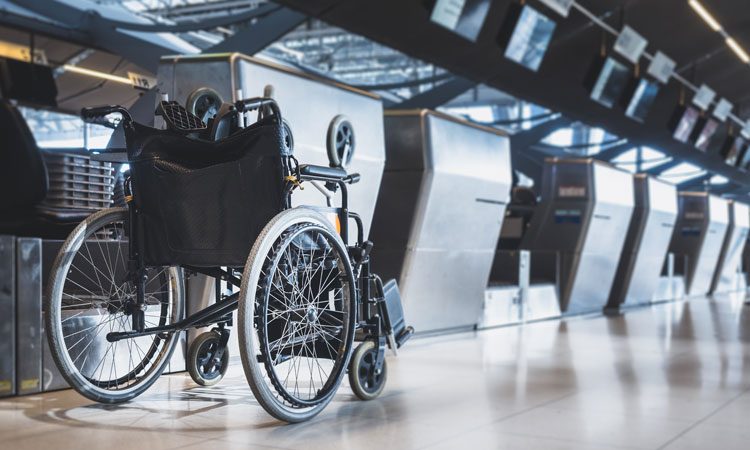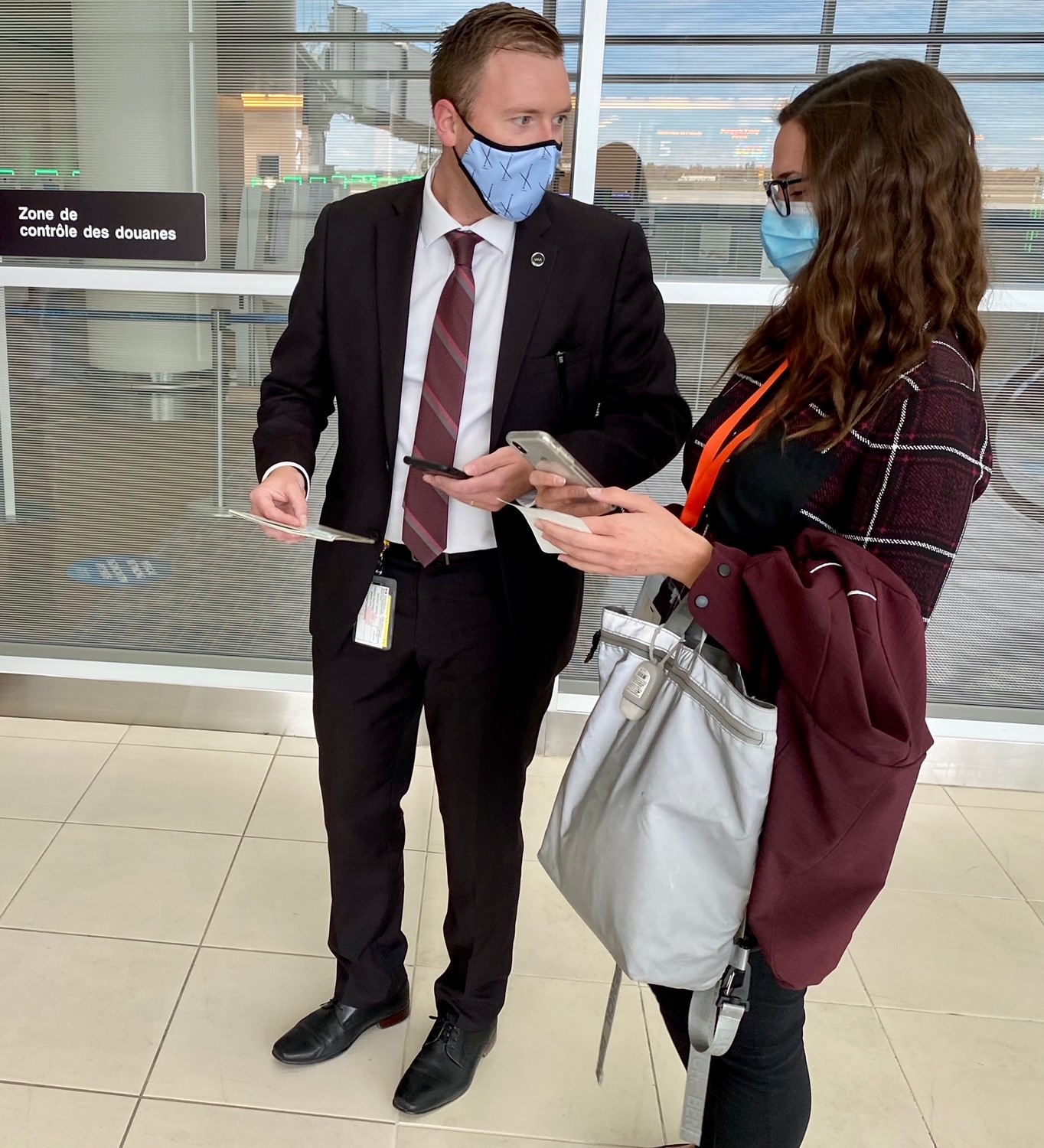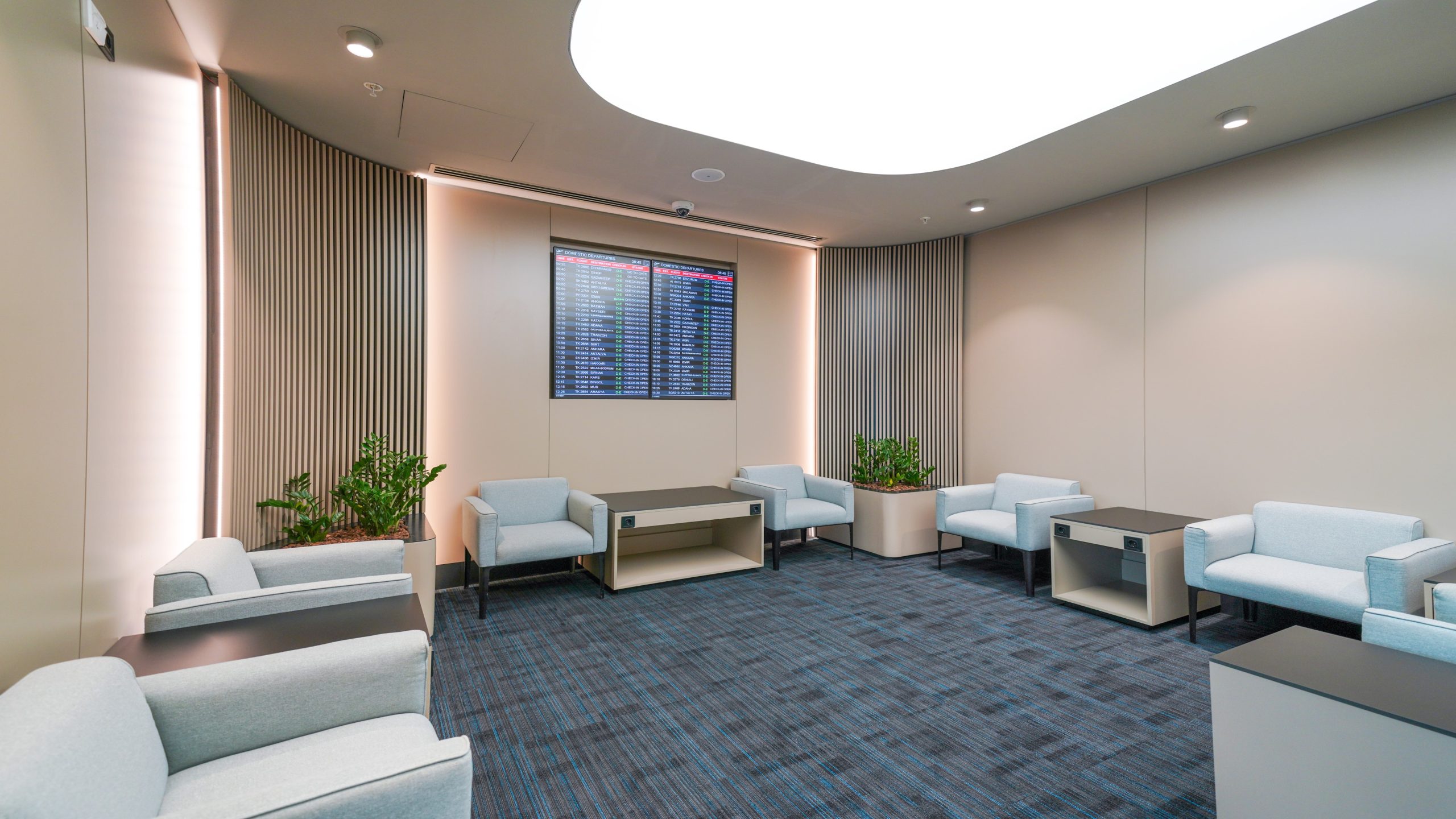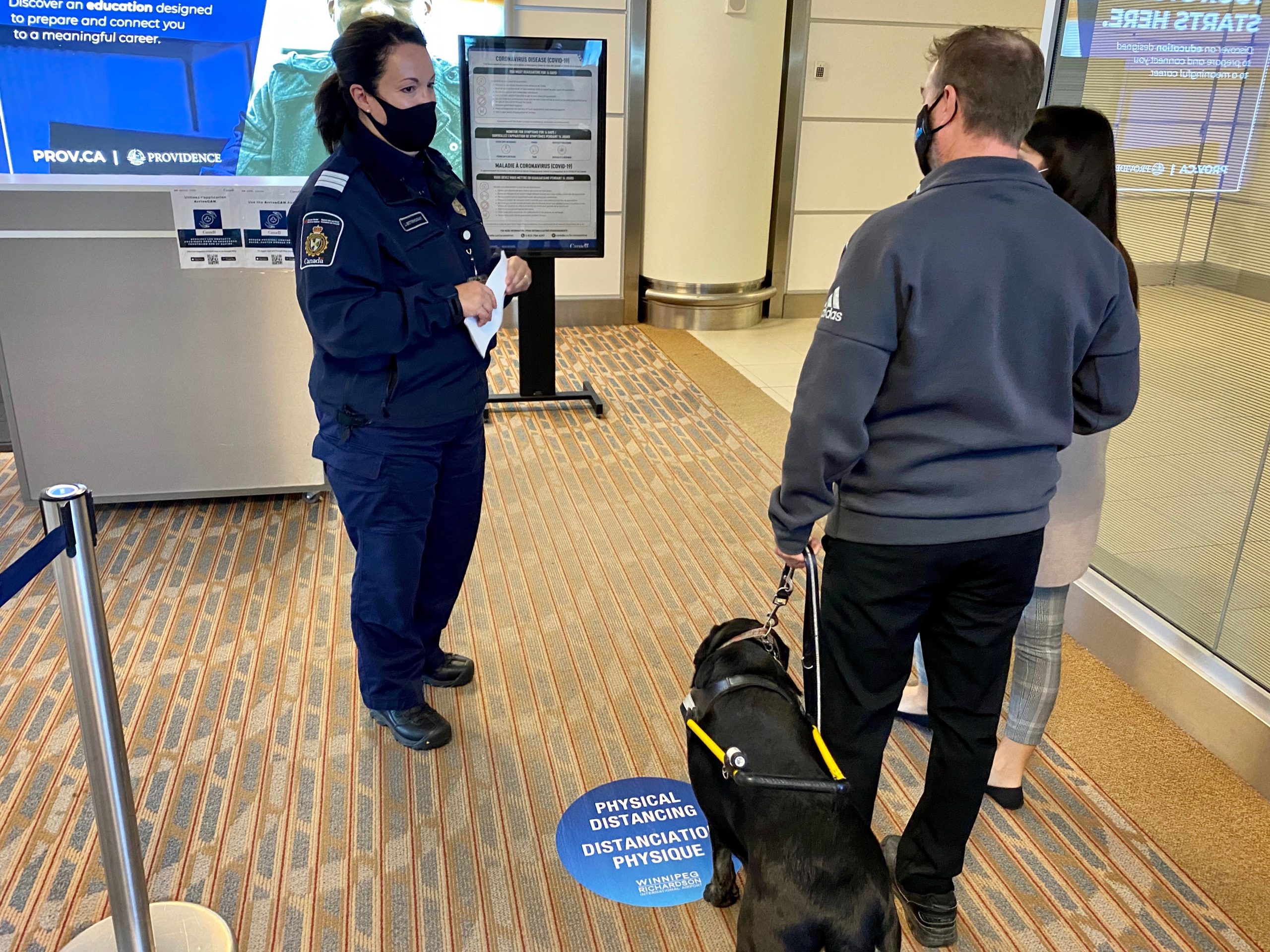Bringing airport accessibility to higher grounds
- Like
- Digg
- Del
- Tumblr
- VKontakte
- Buffer
- Love This
- Odnoklassniki
- Meneame
- Blogger
- Amazon
- Yahoo Mail
- Gmail
- AOL
- Newsvine
- HackerNews
- Evernote
- MySpace
- Mail.ru
- Viadeo
- Line
- Comments
- Yummly
- SMS
- Viber
- Telegram
- Subscribe
- Skype
- Facebook Messenger
- Kakao
- LiveJournal
- Yammer
- Edgar
- Fintel
- Mix
- Instapaper
- Copy Link
Posted: 14 December 2022 | Jean-Sébastien Pard | No comments yet
Jean-Sebastien Pard, Senior Manager, Facilitation, Passenger Services and Operations, ACI World tells International Airport Review why it is crucial that airports adapt to the changing passenger demographic and make air travel more inclusive for all, how ACI World is helping airports in this journey, and highlights some fantastic examples from his IAR Summit panellists IGA Istanbul Airport and Winnipeg Richardson Airport.


December 3 of each year marks the International Day of People with Disabilities and an opportunity to reflect on the importance of building a more accessible and inclusive air transport ecosystem. Travellers are not always aware of what goes on behind the scenes and it is worth highlighting how airports have been working with airlines and other aviation partners to provide the best experience possible for all passengers, including those with disabilities. As we saw during the International Airport Summit 2022, recently held at Twickenham Stadium, air travel should be for everyone no matter their age, mobility, or disability.
It is estimated that 1.2 billion people, or between 15%–20% of the world population, live with a disability. Furthermore, by 2050, the number of people aged 60 years and older is estimated to double to 2.1 billion. It is critical that airports and their travel partners adapt their businesses to this growing market segment.
Airports recognise that people with disabilities and reduced mobility, including the aging population, necessitate an immediate focus on the design of accessible infrastructure and an inclusive passenger journey. But still—many people face barriers during their journey and inconsistencies between countries and can benefit from greater airport accessibility. As post-pandemic traffic bounces back, airports and their aviation partners need to overcome the challenges in meeting the needs of all customers, including those with disabilities.


ACI Accessibility Enhancement Accreditation Program
Improving accessibility continues to be important to our airport members who have a shared goal of providing all customers with a welcoming, empowered, and inclusive experience. All journeys should be accessible, navigable, and usable – to the greatest extent possible – by all people, regardless of their age, ability, or disability. A holistic consideration of accessibility and inclusivity through the lens of an end-to-end journey, while addressing the needs of different user groups, is key to the design process of new and existing airport infrastructure.
In 2019, ACI World’s highest body, the World Annual General Assembly, adopted a milestone resolution which affirmed the commitment of airports globally to continuously strive for excellence in customer service and experience, including accessibility for passengers with disabilities.
More recently, ACI launched at the Customer Experience Global Summit in Krakow last September the Accessibility Enhancement Accreditation (AEA) program designed to help airports assess their accessibility and disability inclusion practices. Several accessibility advocacy groups, airports, industry partners, and ACI collaborated in the development of the program. The first-of-its-kind program provides a continuous path of improvement for airports in the area of accessibility for passengers with disabilities. This program assists airports in implementing existing global best practices and recommendations, including those put forward in the ACI Airports and Persons with Disabilities Handbook.
One of ACI’s pillars of its accessibility strategy is to help our members share and adopt best practices and to recognise leading airports in this area. For this reason, the AEA questionnaire considers barriers that passengers may face in their overall traveller experience, which can include activities involving other airport partners within the entire airport journey (e.g., airlines, border authorities, ground handlers, etc.). The questionnaire is also outcomes-based—that is, it is based on goals and desired outcomes as established by the program. It also avoids prescriptive measures that may not be appropriate for all airports around the world. Finally, the questionnaire focuses on airport accessibility policies, culture, governance, staff training, collaboration with disability groups, and the overall customer experience in terms of collecting feedback.
Furthermore, we are pleased to have received support from the International Civil Aviation Organization (ICAO), the United Nations organisation specialised in aviation, for the launch of the program.
New resolution on accessibility at the ICAO 41st Assembly
On the regulatory side, ACI continues to work with governments through ICAO to enhance the global regulatory framework. A set of common standards and recommended practices related to accessibility already exist in the ICAO Facilitation Annex 9. An efficient, consistent regulatory framework is key, as it ensures that persons with disabilities’ fundamental rights are respected. Many governments have a strong legal framework in place to reduce barriers and increase opportunities for people with disabilities to ensure their full participation in society.
A recent milestone has been the adoption of the first ICAO Resolution on accessibility of air transport to persons with disabilities and persons with reduced mobility, spearheaded by ACI and developed in cooperation with several governments and industry partners. The Resolution recognises that dignity and non-discrimination are universal rights that apply to all persons and requests the development of an effective ICAO strategy and work program on accessibility.
There is much work ahead, but regulations should not be seen as a ceiling that airports and industry must reach. Instead, ICAO Resolutions and Standards and Recommended Practices, like national regulations, are essential foundations of providing a basic level of expectations for persons with disabilities.
Re-humanising the airport accessibility experience
Customer experience execution is about creating positive emotions, delivering an experience fitting to expectations, and strengthening the emotional bond between the traveller and the airport. In the past 24 months, the lack of human interactions has highlighted the importance of human-to-human services. Passengers, employees, and airport stakeholders are all looking for positive and meaningful human experiences within airports.
The COVID-19 pandemic reminded us how for some – principally older people or those living with a visible or non-apparent disability – travel can be inherently stressful and difficult, or even impossible. Not only is creating an inclusive and accessible experience for all the right thing to do, it also makes business sense; it welcomes more travellers and facilitates the associated purchase of products and services, in turn improving commercial outcomes for airports. What’s more, a better customer experience is usually associated with increases in non-aeronautical revenues (NAR) for airports (e.g., food and beverage, shopping, duty-free). In this way, an inclusive airport experience contributes to the vitality and viability of the airport.


Very Special Guest Room
Examples from airports
Airports are taking some proactive steps towards inclusion. Here are only a few examples of airport amenities and services and why airports are involved with accessibility matters—shared by my International Airport Summit 2022 co-panellists Kirk Goodlet, Director, Facilitation and Product Development from Winnipeg Airport Authority (Canada) and Abdulkadir Demirtaş, Customer Experience Manager, IGA Istanbul Airport (Turkey).
What does your airport offer in terms of amenities and services to passengers with disabilities?
Winnipeg Richardson Airport:
- Autonomous wheelchair services from check-in to boarding gate
- Sunflower Lanyard Program for passengers with non-visible disabilities
- Passenger Rehearsal Program
- Lived Experience Focus Groups for attitudinal barriers
- Visual information readily available for people who are blind or low vision
- Mobile app designed to assist people with autism and neurodiversity
Istanbul Airport:
- 900 dedicated parking spaces
- 20 priority entrances
- 165 accessible toilets
- Special passenger service point: Calmer area in check-in zone for the people with light, noise, and crowd sensitivities
- Dedicated guest room and guest card for Cerebral Palsy, Autism, and Down Syndrome
- Sunflower Lanyard Program for passengers with non-visible disabilities
- Priority baggage at claim area
- 5 adult changing rooms (domestic and international departure and arrivals)
- Loud Steps: Step-by-step indoor navigation with voiced instructions
- Autism Friendly İstanbul Airport Guide on website


Passenger rehearsal at Winnipeg Richardson Airport
What are you looking to add in the near future in terms of additional airport amenities and services?
Winnipeg Richardson Airport:
- Sensory room
- Additional accessible toilets
- Continuous improvement exercises (internal auditing and development of accessibility management system)
Istanbul Airport:
- Stoma toilets in adult changing rooms
- Special food Corner for persons with Cerebral Palsy, Alzheimer, Parkinson, Dementia, and Dystonia
- Re-designing passengers needing assistance areas


Special Passenger Service, Istanbul Airport Point Istanbul Airport
How did the airport decide to make accessibility a priority? Was it for example because of national regulations, customer complaints, revenue, or something else?
Winnipeg Richardson Airport:
Regulations are not enough, and we recognise that disability is an inherent part of being human. 23% of Canadians have a disability, which amounts to over CAD$58 billion in discretionary spending power. Not only is barrier-free travel a human right, but there is a significant market segment that airports must capitalise on.
Istanbul Airport:
Our guests are segmented based on their needs and expectations, such as guests with disabilities, elderly passengers, families with children, global guests, business passengers, generation Z and premium guests. There is no room for a “one size fits all strategy” anymore. In light of this segmentation, we knew that basic standards were the first step to making airports more inclusive and offering amenities such as accessible parking lots, priority entrances, and accessible toilets, etc. But we wanted to go beyond these basic standards. Our motivation is to have Istanbul Airport as the best hub airport in the world and in order to accomplish this, we have to provide the best possible experience for all passengers, including those with disabilities.


Loud Steps, Istanbul Airport
What are you most proud of regarding accessibility at your airport?
Winnipeg Richardson Airport:
- We are proud to be the first airport in North America to offer a fully autonomous wheelchair service, with our partner Whill.
Istanbul Airport:
- We have many examples, but I think the one thing we are most proud of is the variety of solutions and amenities available for passengers with disabilities. We provide more than 20 services and for them, it is valuable that there is a solution or a service at the moment when they need it. Our mindset is that this is not a social responsibility but rather a human right. We are proud of Istanbul Airport’s mindset regarding accessibility.


CBSA and service dog
How does your organisation acquire accessibility expertise? Does this occur at all levels of the organisation (executive to customer-facing staff)?
Winnipeg Richardson Airport:
- We leverage our mYWG Accessibility Committee, which consists of advocacy groups and people with lived experience. We understand that attitudinal barriers are often the most pervasive barriers and training is the best way to remedy them. Training takes place at all levels in the organisation.
Istanbul Airport:
- In our organisation, awareness of accessibility is very well spread at all levels of the organisation (bottom to top). We have two dedicated colleagues in our customer experience department who lead and follow all projects, training, and awareness raising programs. We could not have done it without the support of the airport CEO, the top management, but also all stakeholders and employees involved in improvement projects.
We also benchmarked accessible and inclusive offerings of other airports and various sectors such as finance, insurance, telecommunications, resorts and hotels.
Finally, Kirk, speaking from the perspective of the founding chair of the Canadian Airports Accessibility Working Group, could you explain why consistency in how airports offer services and facilities remains a key priority for you and one of the fundamental challenges when it comes to passenger experience?
- Consistency is fundamental to how airports offer services to people with disabilities. Our industry benefits from both standardisation and harmonisation, which reinforces our commitment to safety and security. The same logic applies to providing accessible and barrier-free travel to people with disabilities. Inconsistency in services, training, and facilities significantly affect how people encounter barriers while traveling. The core mandate of the Canadian Airports Accessibility Working Group involves driving consistency across our vast airport system and to ensure that Canadian airports are aligned on matters of regulations and consultation.
iGA Cares at Istanbul Airport
Related topics
Related airports
Istanbul Airport (IST), Winnipeg Richardson International Airport (YWG)
Related organisations
Airports Council International (ACI World), Winnipeg Airports Authority

















